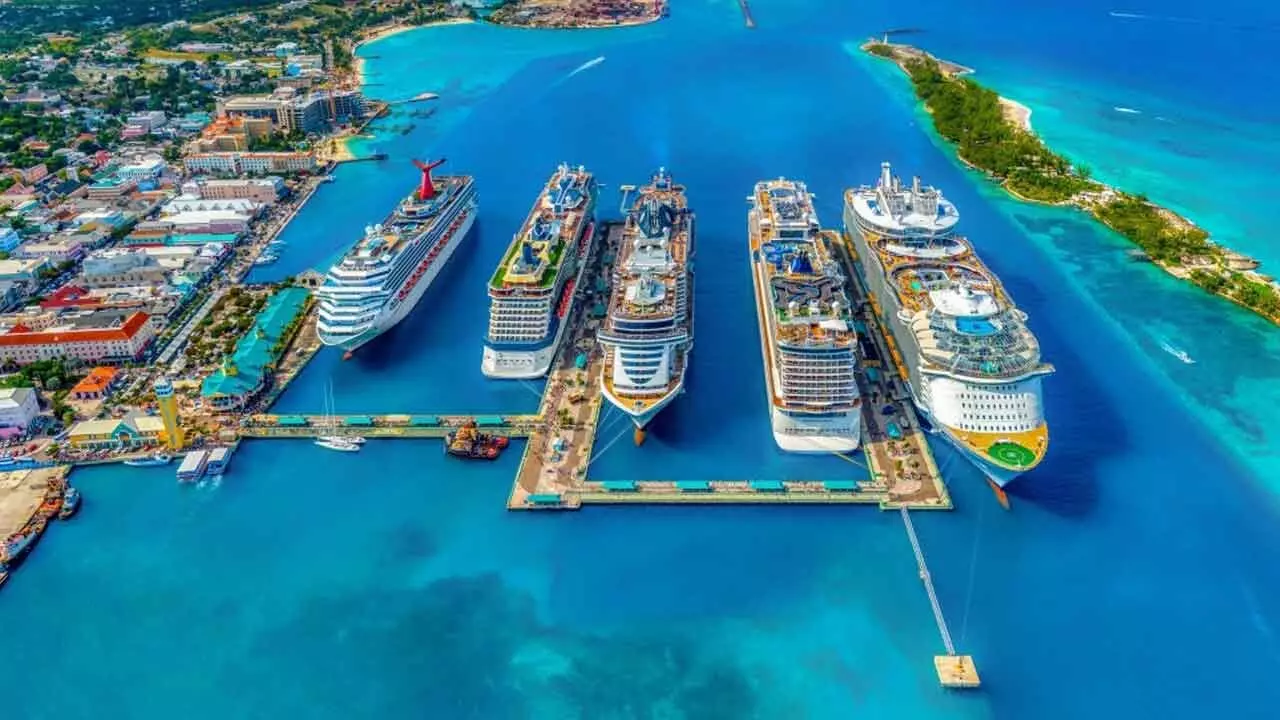The future of cruise industry is the younger generation
Visiting multiple destinations and value for the money top reasons to cruise
The future of cruise industry is the younger generation

By comparing flight schedules, seat prices, and on-time performance patterns, the most suitable travel arrangements can be arranged for crew, ensuring timely arrivals and minimizing travel disruptions without over-extending workforce travel budget
The cruise industry will carry 35.7 million passengers in 2024, which is a six percent rise from 2019. By 2027, cruise is forecast to grow to nearly 40 million passengers. Global cruise capacity is forecast to grow at least 10 per cent from 2024 to 2028. Cruise operators aren’t just welcoming bigger crowds – they’re also seeing more younger and first-time passengers coming aboard.
As passenger numbers steadily increase and demographic interests change, operators face the challenge of managing diverse preferences while optimizing journey logistics. Take a cruise through our strategies for capturing and retaining passenger demand, through transformed on-board operations, enabling technologies, and cutting-edge travel analytics.
Visiting multiple destinations and value for the money are the top reasons cruisers love to cruise.
All-in-one packages for food, lodging, and airfare are popular purchases among major brands like Viking Cruises and Royal Caribbean. While convenient and cost-effective for passengers, these bookings require strategic coordination between multiple accommodations, transportation, and food/beverage providers, each with its own unique products and schedule constraints. Flight data plays a crucial role in helping cruise operators coordinate these complex travel arrangements.
By using real-time flight status data, cruise operators can dynamically adjust travel schedules, and optimize packages to accommodate delays and availability. In the same way, analyzing flight schedules to popular port cities allows operators to benchmark fares based on high passenger volumes. This ensures that the purchase price for a passenger accurately reflects the cost of airfare, which can fluctuate depending on the time of the year or end destination. Comparative analysis enables cruise companies to identify cost-effective routes and make informed decisions about travel itineraries, ensuring optimal passenger satisfaction and cost efficiency.
Capacity and average fare data can be used to determine the best flight options and prices for crew members traveling to port cities. By comparing flight schedules, seat prices, and on-time performance patterns, the most suitable travel arrangements can be arranged for crew, ensuring timely arrivals and minimizing travel disruptions without over-extending workforce travel budget. Creating a smoother process for both the business and the crew ensures a better experience for passengers, both onboard and off.
Younger generations are more interested in cruising than ever before, with 73 per cent of Millennials and Gen X travelers considering a cruise vacation. Designing a ship experience that can expand personalized interactions is vital to forging deeper connections with this new generation of travellers.
Cruise lines are harnessing aviation data to gain insights into passenger preferences and behaviour, allowing them to tailor their offerings accordingly. Royal Caribbean, for instance, employs advanced data analytics to predict passenger preferences based on historical data and real-time inputs. By analyzing factors such as booking patterns, onboard activities, and dining preferences, it can personalize experiences for each passenger.
Looking at the origin and destinations for passenger groups can help determine the best activity options like advising sun-and-sand experiences to travellers from cold-weather destinations. Using these insights allows cruise lines to create memorable, highly personalized experiences that resonate with passengers long after they disembark.
Unlike land-based businesses, cruise ships operate a multi-destination experience. This means managing various regulations, weather patterns, and health and safety protocols — all of which create a distinct security challenge.
Real-time flight data is instrumental in ensuring a secure environment for passengers and crew, both on-land and off. Cruise companies can use real-time data to monitor various aspects of their operations and respond proactively to potential risks.
Carnival Cruise Line, for example, uses real-time weather data and advanced analytics to monitor sea conditions and adjust routes as necessary. By staying informed about weather patterns and potential hazards, Carnival can make informed decisions to avoid rough seas and ensure a smooth sailing experience.
Seamless service offerings and logistical strategies are vital to meeting travelers evolving expectations around travel and experience trends. As the industry continues to innovate, the integration of aviation data will remain central to providing travelers with the seamless, connected experiences they expect.
Extended cruises create more complicated itineraries, and the surge in demand for these options underscores the importance of seamless travel coordination. This is where real-time aviation data becomes an indispensable tool. By using insights into flight schedules and capacity, cruise operators can efficiently manage passenger itineraries, ensuring smooth transitions between flights and cruise embarkations, optimizing connections, and minimizing delays.
As more travellers take to the seas, the cruise industry’s ability to harness and apply these insights will determine about who provides the seamless, connected experiences that modern travellers expect.
The future of cruising is bright, and those who navigate it with data insights will undoubtedly stay ahead of the competition.
With more than 300 ships in 2024 and another 35 ships on order till 2028, the cruise industry, all said and done, is poised for exponential growth.

